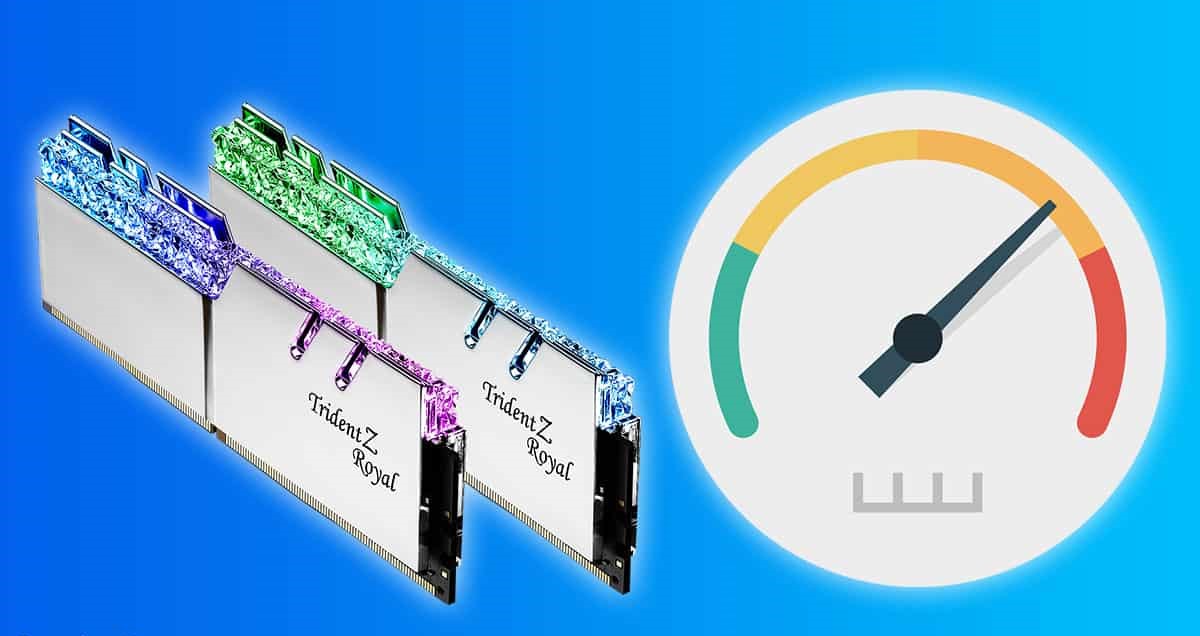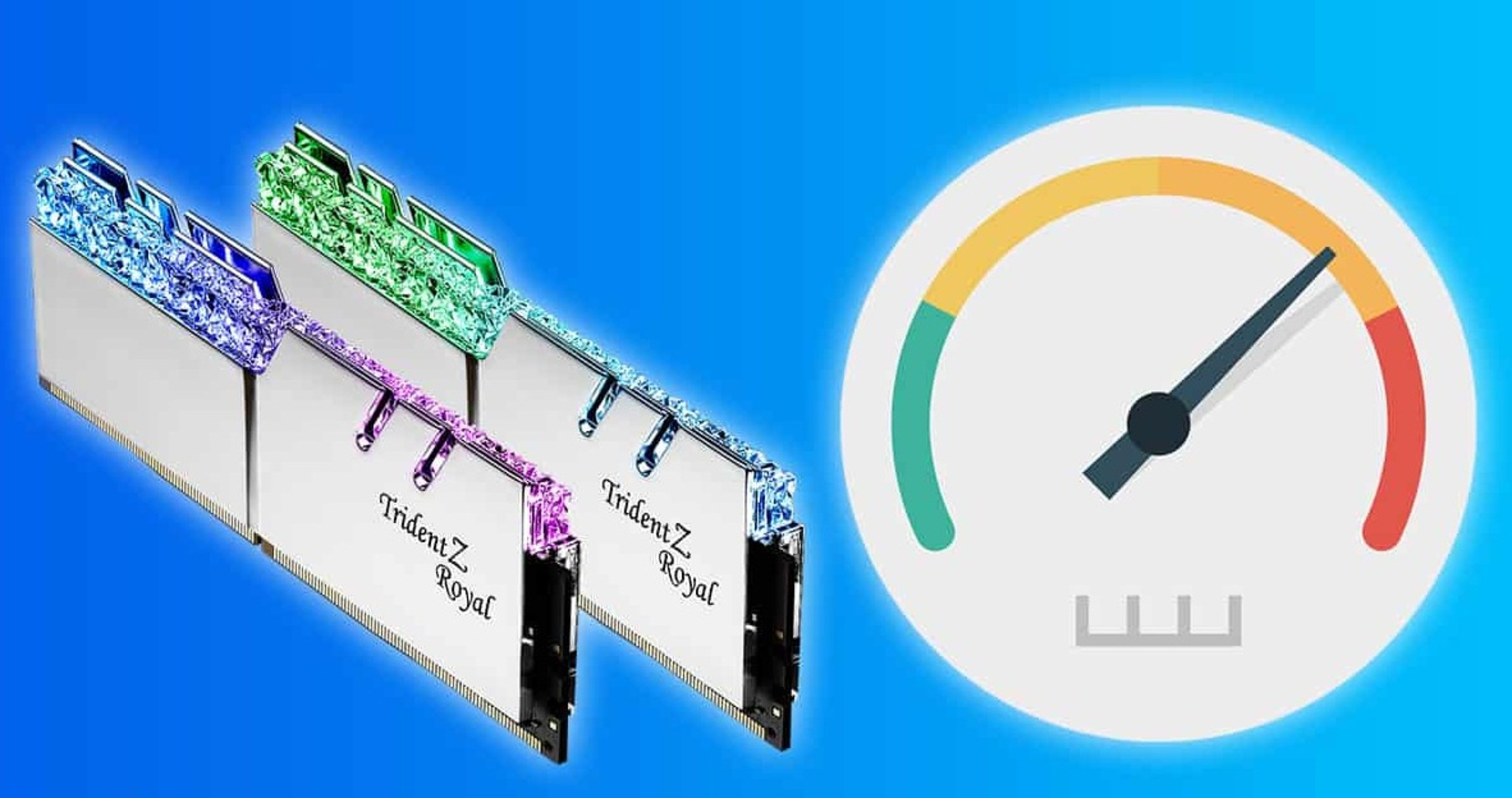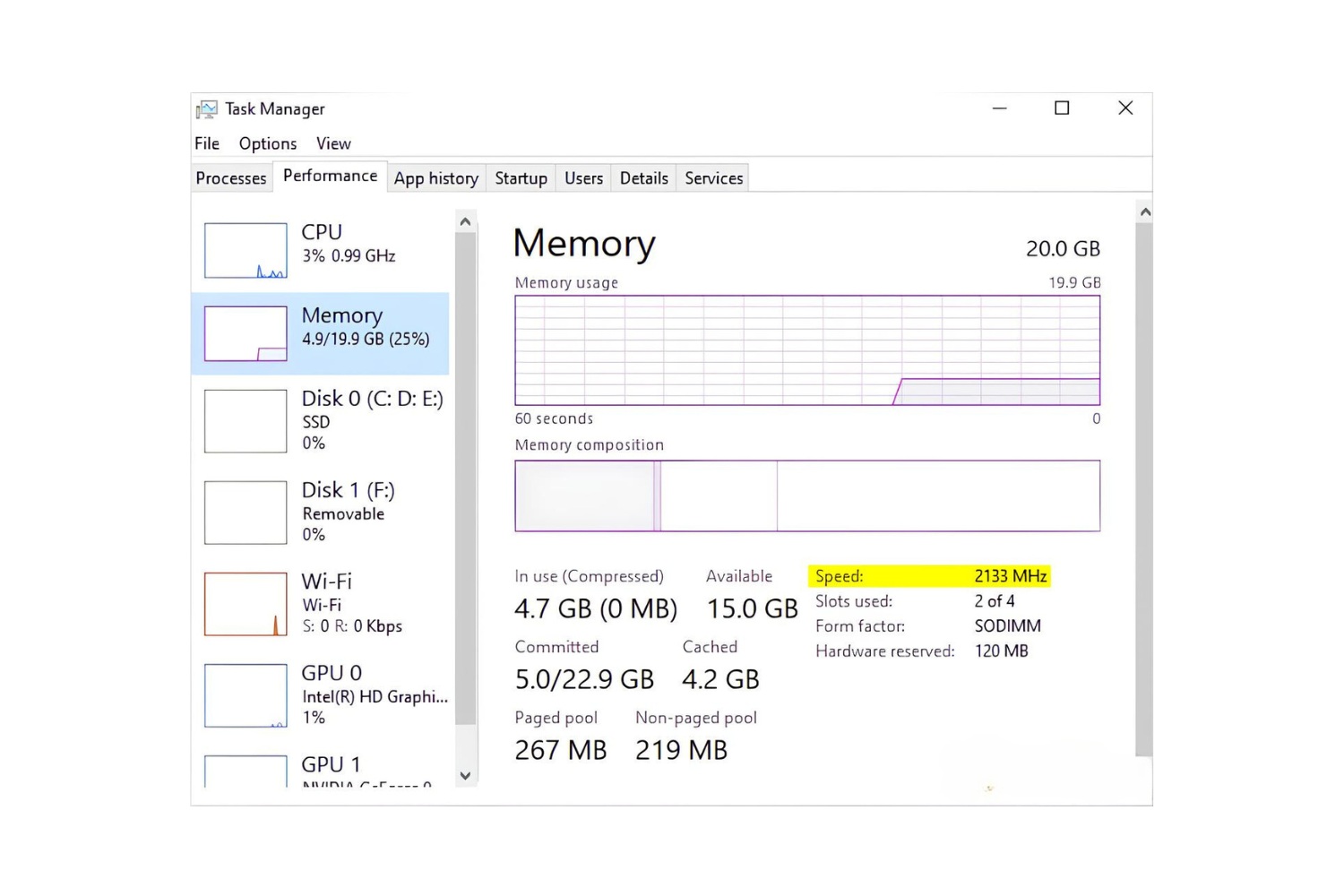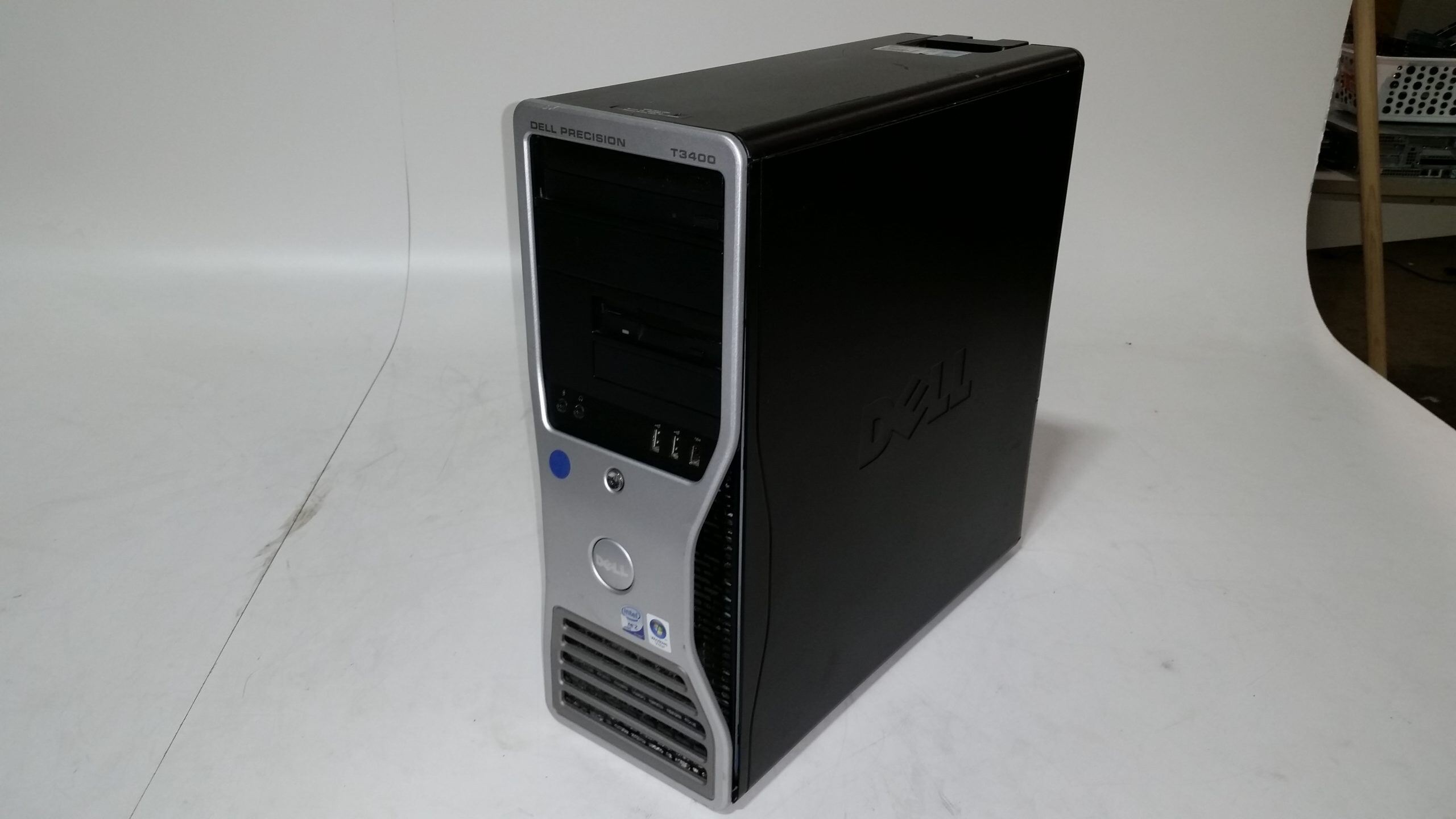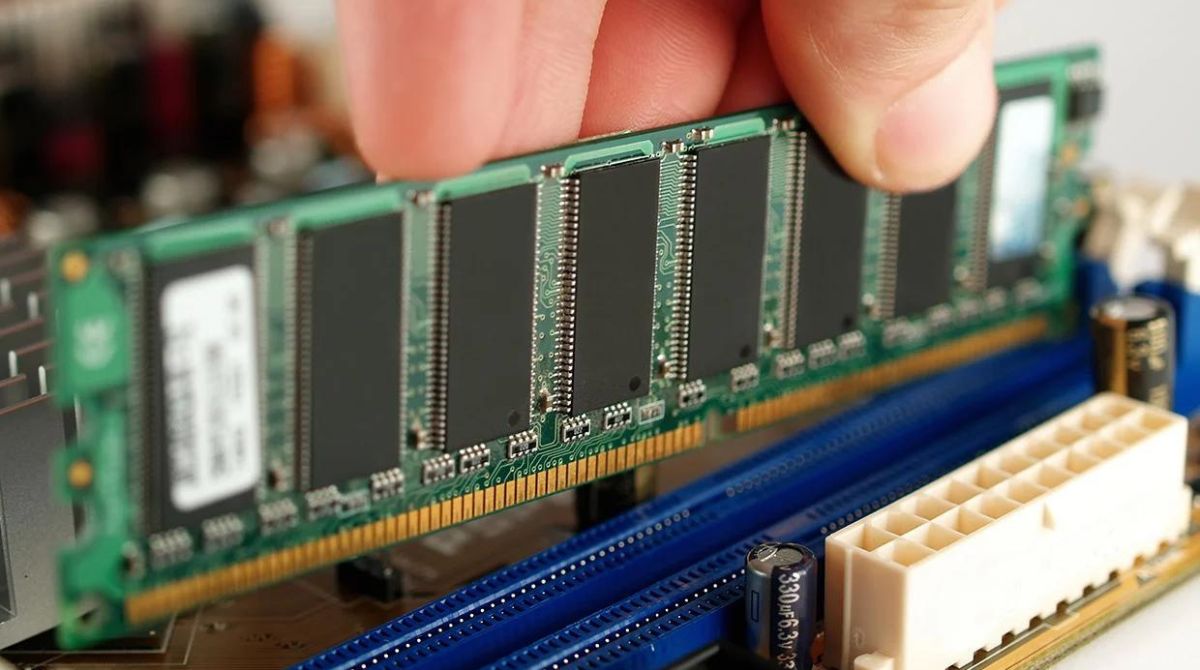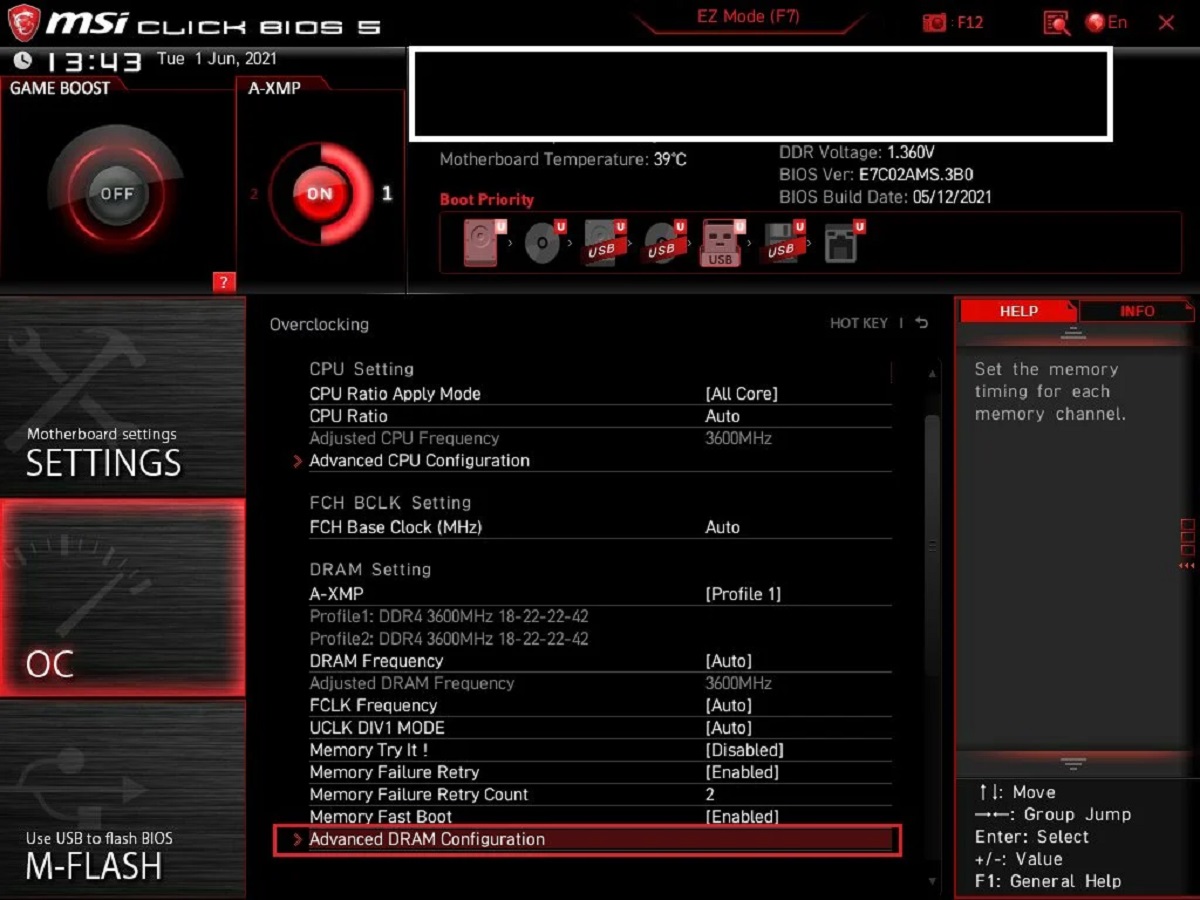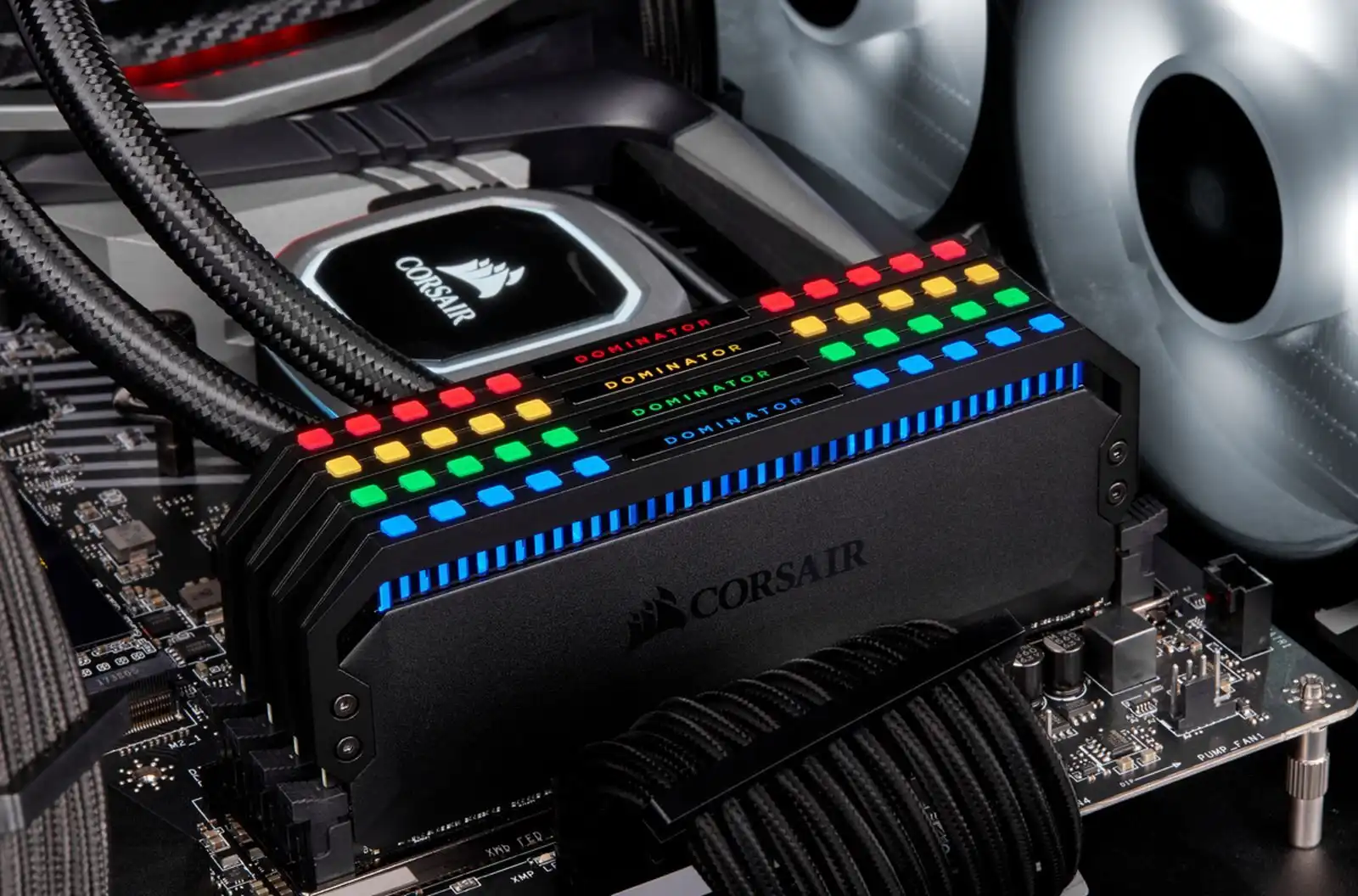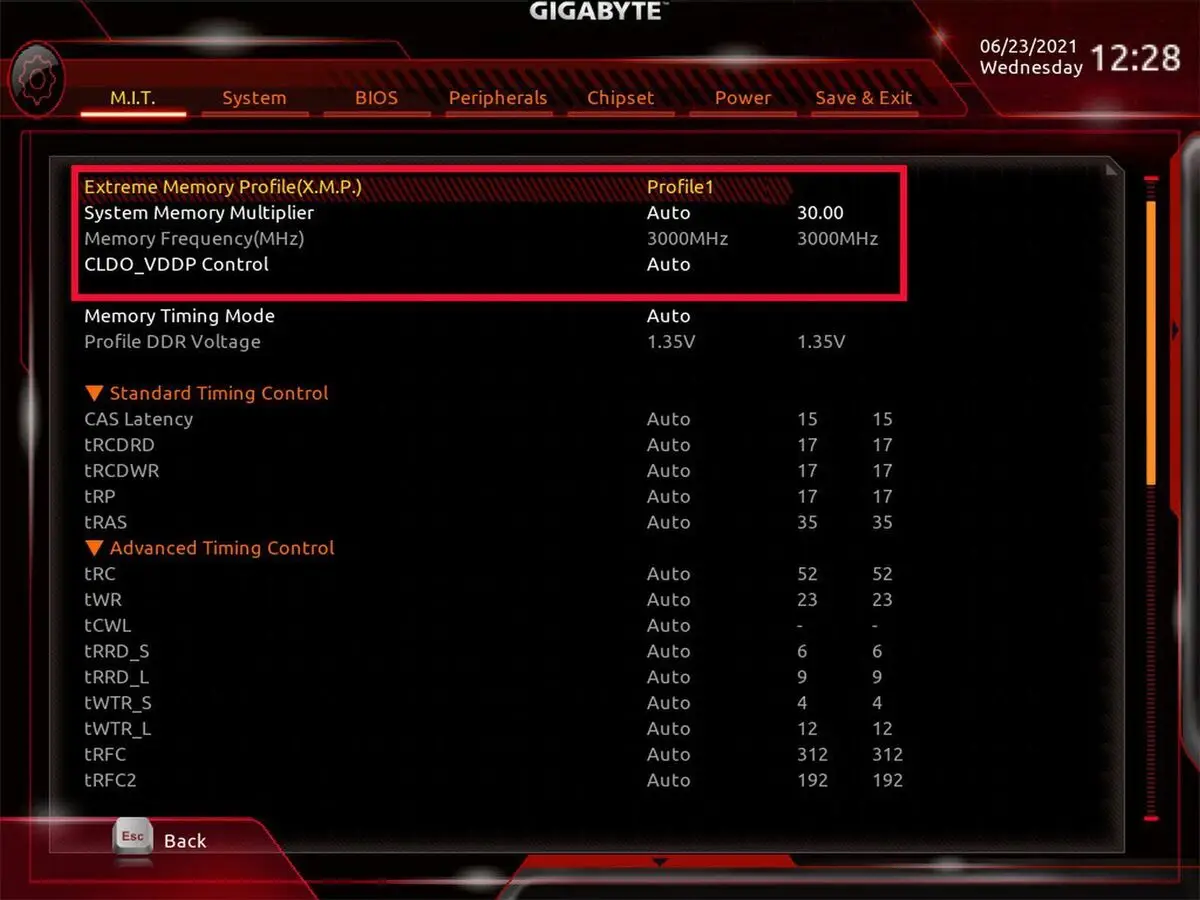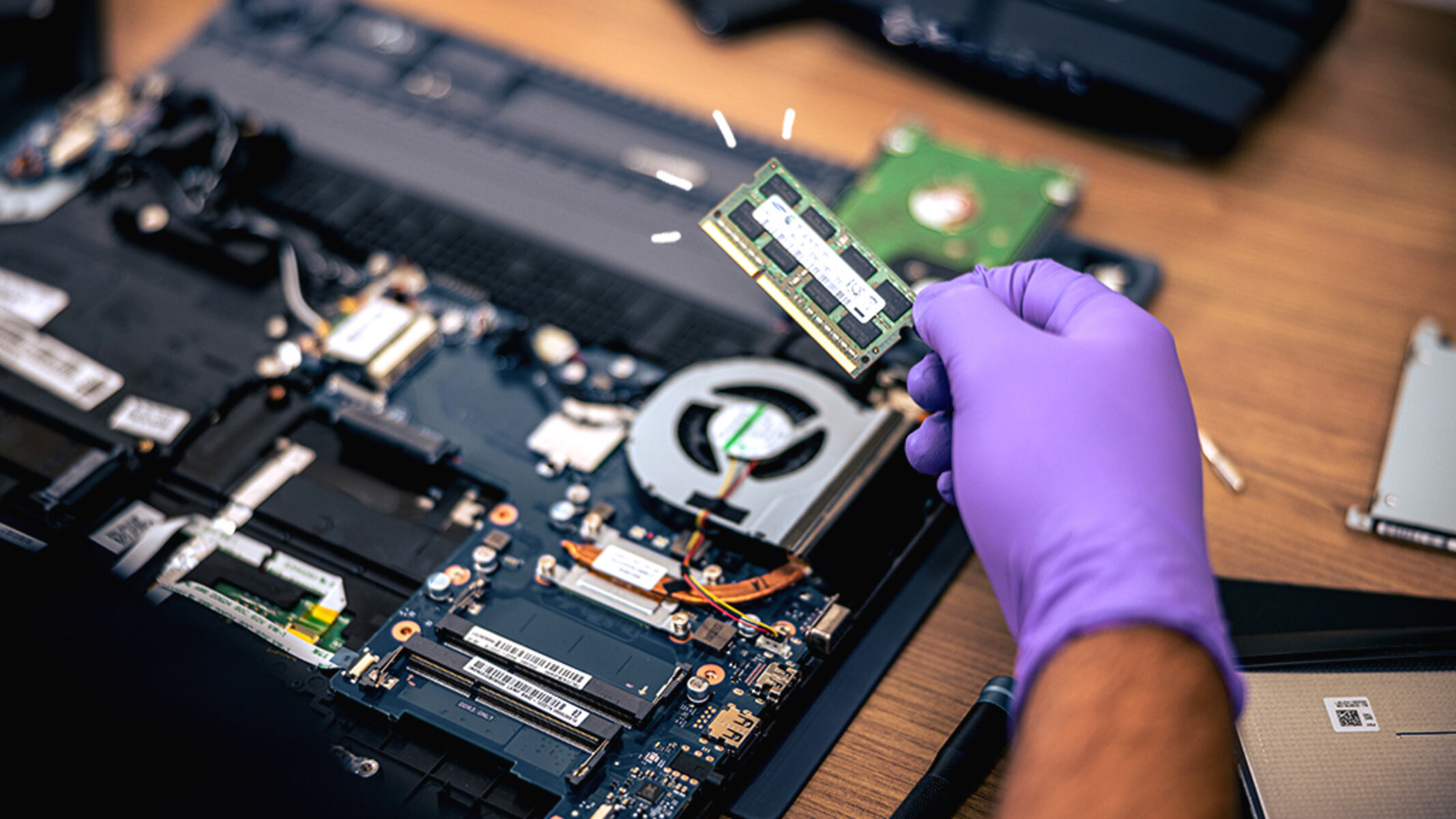Introduction
Welcome to the world of computer hardware, where every component plays a vital role in determining the overall performance of your system. When it comes to memory, one of the key factors that can significantly impact your computer’s speed and responsiveness is RAM speed. RAM, or Random Access Memory, is a type of computer memory that stores data that the processor can access quickly. The speed at which this data is transferred to and from RAM is crucial in determining how effectively your computer can handle multitasking, gaming, or resource-intensive applications.
Understanding the concept of RAM speed is essential, as it directly affects the performance and efficiency of your computer. In this article, we will explore what RAM speed is, why it matters, and how to choose the right RAM speed for your specific needs.
RAM speed refers to the frequency at which data can be read from or written to the RAM module. It is measured in megahertz (MHz) and represents the number of cycles per second that the RAM can perform. The higher the RAM speed, the faster the data transfer rate, resulting in improved overall system performance.
So, why does RAM speed make a difference? Well, the speed at which data is transferred between the RAM and the CPU directly impacts the processing speed of your computer. When the RAM speed is fast, the CPU can quickly fetch the required data, leading to faster application launches, smoother multitasking, and quicker response times. On the other hand, if the RAM speed is slow, the CPU has to wait longer for the data to be delivered, resulting in sluggish performance and potential bottlenecks.
Several factors determine the RAM speed requirements for your system. The primary consideration is the type of tasks you typically perform on your computer. If you mainly use it for basic web browsing, document editing, and email, you may not need high-speed RAM. However, if you are a gamer, content creator, or run resource-intensive applications like video editing software or virtual machines, faster RAM speeds can greatly improve your system’s performance and smoothness.
In the next section, we will discuss how to match RAM speed with the processor speed, as these two components work hand in hand to deliver optimal performance. Stay tuned!
What is RAM Speed?
RAM speed refers to the rate at which data can be accessed and transferred between the RAM module and the processor. It is measured in megahertz (MHz) and represents the number of cycles per second that the RAM can perform. The higher the RAM speed, the faster the data transfer rate.
When you open an application or perform a task on your computer, the processor needs to access the necessary data from the RAM. RAM speed determines how quickly this data can be retrieved and provided to the processor. Think of it as a highway for data—higher RAM speed means more data can travel through the highway at once, resulting in quicker access and improved performance.
RAM speed also influences multitasking capabilities. If you have multiple applications open simultaneously, each requiring access to data stored in RAM, a higher RAM speed ensures that the data can be quickly retrieved and processed, reducing lag and improving overall system responsiveness.
It is important to note that RAM speed is separate from the amount of RAM you have in your system. RAM speed refers to the rate at which data is transferred, while RAM capacity refers to the amount of data that can be stored. Both factors are crucial for optimal system performance, but they serve different purposes.
To put it into perspective, let’s consider an analogy. Imagine that your computer is a bookstore, and the books in the store represent the data stored in RAM. RAM speed would be analogous to the speed at which the storekeeper retrieves books from the shelves and delivers them to the customers. The faster the storekeeper can locate and provide the books, the less time customers have to wait. Similarly, the higher the RAM speed, the quicker the processor can access the data it needs, resulting in faster application launches and smoother performance.
Keep in mind that while RAM speed is important, it is just one factor among several that contribute to overall system performance. Other factors, such as the processor speed, storage type (such as SSD or HDD), and graphics card, also play a role in determining how fast your computer can perform.
Now that we understand what RAM speed is and its significance for system performance, let’s dive into why it matters and how it can impact your computer experience. Strap in and get ready to uncover the secrets of RAM speed!
Why Does RAM Speed Matter?
RAM speed is a critical factor in determining how efficiently your computer can handle various tasks and applications. The speed at which data is transferred between the RAM and the processor directly impacts the overall performance and responsiveness of your system. Here are a few reasons why RAM speed matters:
1. Faster Application Launches: When you open a program or application, it needs to load data into RAM for quick access by the processor. A higher RAM speed allows for faster data transfers, resulting in quicker application launches. This means you spend less time waiting for your favorite programs to load and can jump into your tasks right away.
2. Smoother Multitasking: If you often find yourself working with multiple applications simultaneously, having a higher RAM speed becomes even more crucial. It allows for seamless switching between applications, as the processor can retrieve the required data from RAM quickly. This reduces the risk of lag and improves overall system responsiveness.
3. Improved Gaming Performance: Gamers, in particular, can benefit from faster RAM speeds. Modern games often require large amounts of data to be loaded into RAM for smooth gameplay. Higher RAM speeds ensure that the necessary game assets, such as textures and models, can be quickly retrieved, providing a smoother and more immersive gaming experience.
4. Enhanced Resource-intensive Tasks: If you engage in resource-intensive tasks like video editing, graphic design, or 3D rendering, faster RAM speeds can significantly improve your workflow. These tasks often involve working with large file sizes, and having a high-speed RAM ensures that data can be read and written quickly, reducing rendering times and improving overall productivity.
5. Future-proofing Your System: Investing in faster RAM speeds can also help future-proof your computer. As software and applications become more demanding over time, having a higher RAM speed can ensure that your system can handle the requirements of future updates. This helps prolong the lifespan of your system and delay the need for a complete hardware upgrade.
While RAM speed can have a significant impact on system performance, it is important to note that its benefits may vary depending on other hardware components. For instance, if your processor or storage drive is a bottleneck, the full potential of high-speed RAM may not be realized. Therefore, it is essential to consider the overall hardware configuration of your system when evaluating the importance of RAM speed.
Now that we understand why RAM speed matters, let’s explore the factors that determine the RAM speed requirements for your specific needs. Let’s dive deeper into the world of RAM!
Factors that Determine RAM Speed Requirements
When it comes to determining the ideal RAM speed for your specific needs, several factors come into play. Understanding these factors will help you make an informed decision about the RAM speed requirements for your system. Here are some key considerations:
1. Workload and Use Case: The nature of your tasks and the applications you regularly use is a crucial factor in determining RAM speed requirements. If you primarily use your computer for basic web browsing, document editing, and email, you may not require high-speed RAM. However, if you engage in gaming, content creation, or resource-intensive tasks that involve video editing, 3D rendering, or virtual machines, faster RAM speeds can significantly enhance performance.
2. Processor Compatibility: It is essential to consider the compatibility between your processor and the RAM speed you choose. Different processors have specific specifications and limitations when it comes to RAM speed support. For optimal performance, ensure that your processor can support the RAM speed you plan to install. Consult the documentation or the manufacturer’s website for the recommended RAM speed for your processor model.
3. Motherboard Support: Your motherboard will determine the maximum RAM speed it can support. Check the specifications of your motherboard to ensure that it is compatible with the desired RAM speed. Some older motherboards may have limitations on the maximum RAM speed they can handle, so it is crucial to verify compatibility before purchasing RAM modules.
4. Budget Considerations: RAM modules with higher speeds often come with a higher price tag. Consider your budget constraints when determining the RAM speed requirements. While faster RAM can yield significant performance benefits, it is important to strike a balance between your budget and the performance gains you expect to achieve. Consider the specific tasks you perform and prioritize the RAM speed accordingly to maximize cost-effectiveness.
5. Future Upgradability: If you plan to upgrade your system in the future, it is worth considering higher RAM speeds now. As newer software and applications become more demanding, having faster RAM can help ensure that your system remains compatible and capable of handling future updates. Investing in faster RAM now can potentially save upgrade costs down the line.
By considering these factors, you can assess the RAM speed requirements that best align with your specific needs and budget. Remember, the goal is to find the optimal balance between cost-effectiveness and performance improvement for your intended use cases.
In the next section, we will explore how to match RAM speed with your processor speed for optimal performance. Stay tuned as we uncover more insights on RAM speed!
Matching RAM Speed with Processor Speed
When choosing RAM for your system, it is crucial to ensure that the RAM speed is compatible with your processor speed. The relationship between RAM speed and processor speed is vital for achieving optimal performance. Let’s delve into how to match RAM speed with your processor speed:
1. Check Processor Specifications: Start by checking the specifications of your processor. The processor manufacturer typically provides information on the supported RAM speeds. This information can be found in the product specifications or on the manufacturer’s website. Take note of the maximum RAM speed recommended for your specific processor model.
2. Consider the System’s Front Side Bus (FSB) Speed: The front side bus speed, also known as the system bus speed, refers to the speed at which the processor communicates with other components, including the RAM. The RAM speed you choose should not exceed the maximum FSB speed supported by your processor. Matching the RAM speed and FSB speed ensures optimal data transfer between the processor and RAM.
3. Determine Dual-Channel or Single-Channel Memory Mode: Some motherboards support dual-channel memory mode, which allows for increased memory bandwidth. In dual-channel mode, two identical RAM modules work together to transfer data simultaneously, improving performance. If your motherboard supports dual-channel memory, it is recommended to match RAM module sizes and speeds for best results. On the other hand, if your motherboard operates in single-channel mode, factors like RAM speed and size will have less of an impact on performance, so you can focus on other criteria like capacity.
4. Consider Overclocking: If you have an unlocked processor and want to push the performance limits further, you may also consider overclocking. Overclocking allows you to increase the clock speed of your processor and RAM beyond their default settings. However, it is essential to note that overclocking can void warranties, generate additional heat, and may require additional cooling solutions. It is crucial to have a thorough understanding of the overclocking process and ensure that your hardware components can handle the increased speeds.
By matching the RAM speed with your processor’s capabilities, you ensure a harmonious balance that allows for optimal performance and stability. It is important to consult the documentation and specifications provided by the processor and motherboard manufacturers to ensure compatibility and make informed decisions.
Keep in mind that while matching RAM speed with processor speed is important, it is not the sole determinant of system performance. Other factors, such as the number of cores, cache size, and architecture of the processor, also contribute to overall performance. The goal is to find a balance between these factors to achieve the best possible performance within your budget.
In the next section, we will explore the concept of overclocking RAM and its potential benefits. Stay tuned to uncover more insights!
Overclocking RAM
Overclocking RAM refers to the process of increasing the clock speed of the RAM module beyond its advertised or default speed. It is a technique used by enthusiasts and gamers to extract extra performance from their RAM modules. Overclocking RAM can provide potential benefits, but it requires careful consideration and understanding of the risks involved. Let’s explore the concept of overclocking RAM:
1. Performance Boost: The primary benefit of overclocking RAM is the potential increase in system performance. By running the RAM at higher speeds, you can achieve faster data transfer rates between the RAM and the processor. This can result in improved application loading times, smoother multitasking, and better overall system responsiveness.
2. Compatibility and Stability: Overclocking RAM comes with certain risks, and not all RAM modules are guaranteed to overclock successfully. RAM modules have different levels of overclocking potential, and some may not be able to handle higher speeds without stability issues. It’s important to thoroughly test and monitor system stability after overclocking and be prepared to revert to the original settings if necessary.
3. Heat Generation and Cooling: Overclocking RAM increases the power consumption and heat generated by the module. This can potentially lead to higher operating temperatures. It is crucial to ensure adequate cooling for your system, including proper airflow and cooling solutions for both the CPU and RAM modules. Proper cooling can help prevent overheating and maintain stability during overclocking.
4. Warranty Considerations: Overclocking RAM may void the warranty provided by the manufacturer. Manufacturers typically do not support or offer warranty coverage for any damage resulting from overclocking. Be sure to check the terms and conditions of your RAM manufacturer’s warranty before proceeding with overclocking.
5. Customization and Control: Overclocking RAM provides enthusiasts with the ability to fine-tune their system for maximum performance. It allows you to customize the performance parameters of your RAM, such as the clock speed, timings, and voltage levels, to optimize performance according to your specific requirements. This level of control can be appealing for experienced users seeking to squeeze every bit of performance from their hardware.
It’s important to note that not all RAM modules will have the same overclocking potential. Some modules may be more capable of running at higher speeds, while others may have limited headroom for overclocking. It is recommended to research and consult forums, user reviews, or community resources to gather information about the overclocking potential of your specific RAM model.
Overclocking RAM requires a comprehensive understanding of system stability, hardware limitations, and fine-tuning processes. It is highly advised to follow online guides or seek assistance from experienced individuals to ensure a safe and successful overclocking experience.
In the next section, we will explore common RAM speeds available in the market and their respective benefits and considerations. So, stay tuned for more insights into the world of RAM!
Common RAM Speeds
RAM modules are available in various speeds, and understanding the common RAM speeds can help you make an informed decision when choosing the right RAM for your system. The speed of RAM is measured in megahertz (MHz), and higher MHz values indicate faster data transfer rates. Let’s explore some of the common RAM speeds available in the market:
1. DDR4-2133MHz: DDR4-2133MHz is a common baseline RAM speed for modern systems. It is widely available and offers decent performance for standard tasks like web browsing, document editing, and casual gaming. It provides a good starting point for those on a budget or with more basic computing needs.
2. DDR4-2400MHz to DDR4-2666MHz: RAM modules with speeds in the range of DDR4-2400MHz to DDR4-2666MHz are considered mid-range options. They provide improved performance compared to basic 2133MHz RAM and are suitable for general tasks, gaming, content creation, and multitasking. These speeds strike a good balance between affordability and performance for most users.
3. DDR4-2800MHz to DDR4-3200MHz: RAM modules in this speed range offer higher performance for users who demand more from their systems. They are suitable for gaming enthusiasts, content creators, and professionals who work with resource-intensive applications. These higher speeds can provide noticeable performance gains in tasks like video editing, 3D rendering, and other demanding workloads.
4. DDR4-3600MHz and Above: RAM modules with speeds exceeding DDR4-3600MHz are considered high-speed options. They offer top-of-the-line performance for enthusiasts and hardcore gamers who demand the best from their systems. These modules provide exceptional performance for tasks that require fast data access and transfer rates, such as high-resolution gaming, complex simulations, and heavy multitasking.
It is important to note that the benefits of higher RAM speeds may vary depending on the specific tasks and applications you use. While faster RAM can have a significant impact on performance, it is essential to consider overall system configuration, including the processor, graphics card, and storage, to maximize the benefits of high-speed RAM.
When deciding on the appropriate RAM speed for your system, consider your needs, budget, and the requirements of the applications you frequently use. Keep in mind that the performance gains between RAM speeds may not always be substantial, and investing in higher-speed RAM may not always be necessary or cost-effective for every user.
Now that we have explored common RAM speeds available on the market, let’s proceed to the next section, where we will provide some tips to help you choose the right RAM speed for your specific needs. Don’t miss the upcoming insights!
Tips for Choosing the Right RAM Speed
Choosing the right RAM speed for your system can make a significant difference in its overall performance. To help you make an informed decision, consider these tips:
1. Understand Your Needs: Determine the primary tasks you will be performing on your computer. If you are a casual user who primarily engages in web browsing, email, and basic document editing, lower RAM speeds like DDR4-2133MHz or DDR4-2400MHz may suffice. However, if you are a gamer, content creator, or work with resource-intensive applications, higher RAM speeds like DDR4-3200MHz or above can provide noticeable performance gains.
2. Check Your System Compatibility: Ensure that your motherboard and processor support the desired RAM speed. Consult the specifications provided by the motherboard and processor manufacturers to verify compatibility. Some motherboards may have limitations on maximum RAM speed, and certain processors may have specific recommendations. Checking compatibility will help you avoid compatibility issues and ensure optimal performance.
3. Balance Performance and Budget: Consider the performance benefits of higher RAM speeds in relation to your budget. While faster RAM can improve system performance, the gains may not always be proportional to the cost. Assess your needs realistically and strike a balance between performance and cost-effectiveness. Look for RAM modules that offer the best compromise between the desired performance boost and your budgetary constraints.
4. Consider Future Upgrades: If you plan to upgrade your system in the future, consider investing in RAM with higher speeds. This will help ensure that your system remains compatible with newer software and applications that may have higher performance requirements. Investing in faster RAM now can potentially prolong the lifespan of your system and delay the need for a complete hardware upgrade.
5. Read Reviews and User Experiences: Before making a final decision, read reviews and user experiences regarding the RAM modules you are considering. Look for feedback on performance, compatibility, and stability. User reviews and professional benchmarks can provide valuable insights and help you make an informed choice.
6. Overclocking Considerations: If you have an interest in overclocking your system, look for RAM modules that are known for their overclocking potential. Some RAM modules are specifically designed for overclocking and may offer higher performance capabilities. However, remember that overclocking comes with risks, and it is important to have a good understanding and experience with overclocking techniques.
By following these tips, you can choose the right RAM speed that aligns with your specific needs and budget. Remember, RAM speed is just one aspect of system performance, and it should be considered in conjunction with other hardware components for optimal performance.
Now that you have the necessary tips, it’s time to make an informed decision and upgrade your system with the perfect RAM speed that suits your requirements. Good luck!
Conclusion
RAM speed is a crucial factor in determining the overall performance and responsiveness of your computer system. A higher RAM speed allows for faster data transfer between the processor and RAM, resulting in quicker application launches, smoother multitasking, and improved system performance.
When choosing the right RAM speed for your system, it is important to consider factors such as workload, processor compatibility, budget, and potential future upgrades. Understanding your specific needs and balancing performance requirements with cost-effectiveness will help you make an informed decision.
Matching the RAM speed with your processor speed is essential for optimal performance. Checking the specifications of your processor, considering the system’s front side bus (FSB) speed, and determining whether your motherboard supports dual-channel memory mode are crucial steps in ensuring compatibility and maximizing performance.
Overclocking RAM can provide additional performance benefits, but it requires careful consideration and understanding of the risks involved. Not all RAM modules are created equal when it comes to overclocking potential, so thorough research and monitoring of stability are necessary.
Common RAM speeds range from basic options like DDR4-2133MHz to high-performance options like DDR4-3600MHz and above. Understanding the benefits and limitations of different RAM speeds will help you choose the right option for your specific needs.
By following tips such as understanding your needs, checking compatibility, balancing performance and budget, considering future upgrades, and researching user experiences, you can confidently select the appropriate RAM speed for your system.
Remember that RAM speed is just one aspect of overall system performance. It should be considered in conjunction with other hardware components such as the processor, graphics card, and storage drive for optimal performance and compatibility.
Now armed with the knowledge about RAM speed, its importance, and how to choose the right speed for your system, you can make an informed decision and optimize your computer’s performance. Upgrade your RAM and experience the benefits of faster data transfer and improved system responsiveness. Here’s to a smoother and more efficient computing experience!







